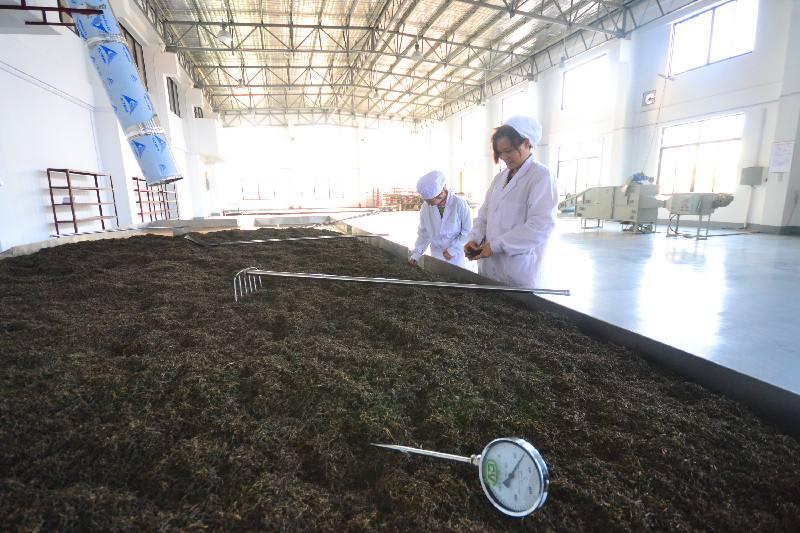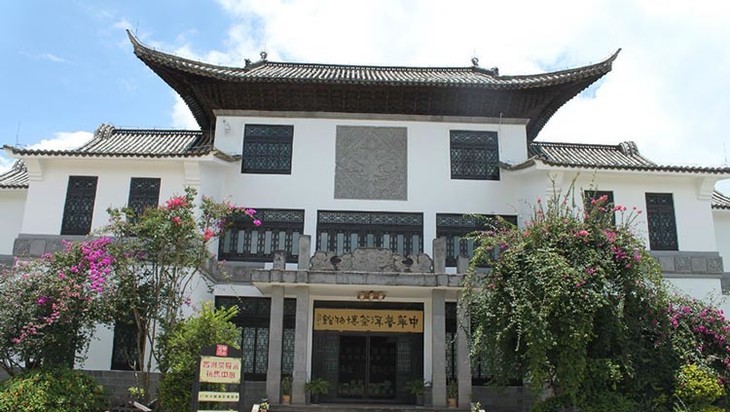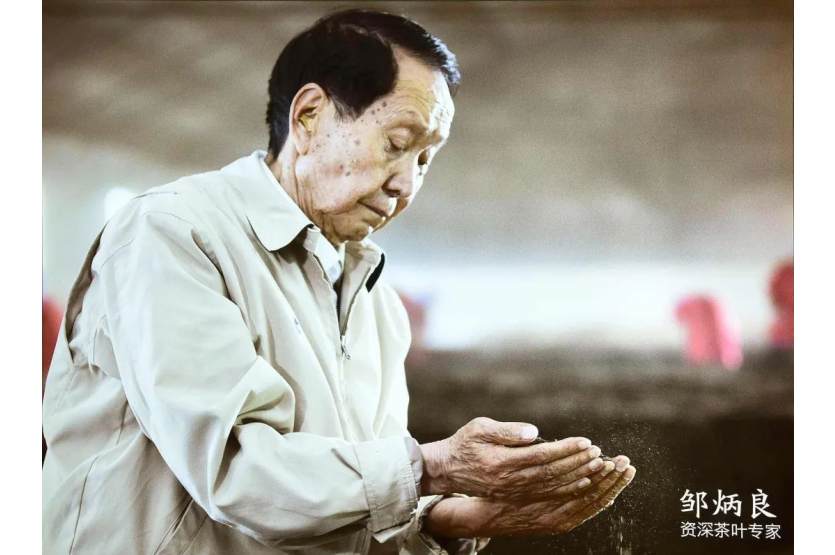The Haiwan Tea Factory is a reputable pu-erh tea company in China that was founded in 1999 by Zou Bing Liang and Lu Guoling, who are both renowned tea masters and experts. Zou Bing Liang was the former co-founder and chief engineer of the famous Menghai Tea Factory. He has created many classic and popular pu erh tea recipes, such as 7542, 8582, 8592, and 7572. Moreover, Mr. Zou has significantly contributed to the improvement of the wet piling process, which is an essential post fermentation method to produce ripe pu-erh tea. In this post, we'll discuss his most significant achievements of this living pu erh tea legend.
Visit this page for our full collection of Haiwan Old Comrade pu erh teas.
The Founder: Zou Bingliang
Zou Bing Liang was born in 1943 in Menghai County, Yunnan Province, where pu erh tea originated. He started working at the Menghai Tea Factory in 1958, when he was only 15 years old, learning the art and science of tea making. During his early years, he was lucky to have the opportunity to learn from the legendary master Wang Zhenyuan, who was the chief engineer of the factory and the inventor of ripe pu erh tea. Zou Bing Liang became Wang's protégé and assistant, and later succeeded him as the chief engineer and director of the factory.
After working many years in the industry, he created many famous pu erh tea recipes, such as 7542, 8582, 8592, and 7572, which have survived the test of time. At last, Zou Bingliang improved the quality and efficiency of the wet piling process, which is the key step in producing ripe pu erh tea. We will discuss this method later in this article.
The Haiwan Factory
In 1999, Zou Bing Liang left the Menghai Tea Factory and founded his own company, the Haiwan Tea Factory, with his wife Lu Guoling. He wanted to preserve the traditional methods and standards of pu erh tea making, while also innovating and experimenting with new blends and techniques. Zou's ambition was to promote pu erh tea to a wider market and educate consumers about its health benefits and cultural value. The company has two main production sites: one in Anning City and one in Menghai County. The factory's logo is the image of three sunflower flowers, and its motto is "Tea for the whole world". Mr. Zou registered the brand "Lao Tong Zhi", which means "Old Comrades", to honor his former colleagues and mentors at the Menghai Tea Factory.
The Old Comrade Brand
The Haiwan factory offers 4 main brands: Lao Tong Zhi (Old Comrade), Jia Jia, Qian Fu, and Gui Zhi Xian, of which the Old Comrade brand is by far the most popular. It's in fact also one of the most popular pu erh brands in China. It reflects Zou Bing Liang's philosophy and vision of making high quality pu erh that is affordable and accessible to everyone. The brand name refers to his former colleagues and mentors at the Menghai tea factory, who he respects and admires. He also wanted to honor the traditional values and standards of pu erh tea making, while also innovating and experimenting with new blends and techniques.
The Old Comrade brand offers a variety of products, including raw sheng and ripe shu pu-erh tea cakes, bricks, tuochas, mini tuochas, loose leaves, and teabags. The brand uses high-quality large-leaf tea leaves as raw materials, which are sourced from Yunnan province, the origin of pu-erh tea. The brand also follows strict quality control and hygiene standards in its production process.
Some of the most popular pu-erh tea products from the Old Comrade brand are:
- 7578 Recipe (Ripe): This is a classic ripe pu-erh tea recipe that was created by Zou Bing Liang in 1975. It has a smooth and mellow taste, with a rich and sweet aroma. It is suitable for daily drinking and aging.
- 7548 Recipe (Raw): This is a classic raw pu-erh tea recipe that was created by Zou Bing Liang in 1975. It has a strong and bitter taste, with a floral and fruity aroma. It is suitable for long-term storage and appreciation.
- 9978 Recipe (Ripe): This is a special ripe pu-erh tea recipe that was created by Zou Bing Liang in 1999. It has a smooth and soft taste, with a woody and earthy aroma. It is suitable for drinking in cold weather or after meals.
- Shenshan Lao Shu (Raw): This is a premium raw pu-erh tea product that uses old tree leaves from Shenshan mountain in Menghai county. It has a strong and complex taste, with a honey and orchid aroma. A populair tea among collectors and connoisseurs.
- Shenshan Lao Shu (Ripe): This is a premium ripe pu-erh tea product that uses old tree leaves from Shenshan mountain in Menghai county. It has a smooth and rich taste, with a chocolate and caramel aroma.
- Fen Dou: This is a unique ripe pu-erh tea product that uses different grades of leaves to create a layered effect. It has a smooth and balanced taste, with a nutty and milky aroma. There's also a raw version available.
Wet Piling

The Haiwan tea factory applies a 'wet piling' technique produce ripe pu erh, also known as shu or shou pu erh. This method was developed in 1972 by Kunming Tea Factory (nowadays known as the Menghai tea factory) to speed up the aging process of pu erh tea and imitate the flavor and color of aged raw pu erh tea. Mr. Zou also contributed to the development of this method, which roughly involves the following steps:
- Piling: The loose tea leaves, called mao cha, are piled up to a certain height, usually around 70 cm. The piles are arranged in rows and covered with a linen cloth.
- Wetting: The piles are sprayed with water to create a warm and humid environment for the tea leaves. The water helps to activate the bacteria and fungi that are naturally present on the leaves or added artificially.
- Turning: The piles are regularly turned and aired to control the temperature and moisture level of the fermentation. The turning also helps to distribute the bacteria and fungi evenly throughout the leaves.
The wet piling process lasts for about 45 days, depending on the desired degree of fermentation. During this time, the tea leaves undergo chemical and biological changes that affect their color, aroma, flavor, and health benefits. Ripe pu erh tea has a dark brown or maroon color when brewed, and a smooth, mellow, earthy, and sweet taste. Some people prefer ripe pu erh tea because it is more affordable, accessible, and consistent than aged raw pu erh tea. It also has some health benefits such as lowering cholesterol, improving digestion, and detoxifying the body. However, some people dislike ripe pu erh tea because it can have a musty or fishy smell or find it an unnatural way of making pu erh tea that destroys the original character the tea leaves.
The Anning Pu Erh Tea Museum

Anning City Tea Museum, established by Mr. Zou showcases the history, culture, and art of tea in Yunnan province. It is located in Anning, which is under the jurisdiction of Kunming city. The museum covers an area of about 10,000 square meters and has four exhibition halls: the History Hall, the Culture Hall, the Art Hall, and the Experience Hall. The museum displays more than 3,000 pieces of tea-related items, such as ancient tea trees, tea leaves, tea sets as well as books, paintings, and sculptures related to tea. The museum also offers various activities for visitors to learn, make, and taste tea. Visitors to also see tea related art performances and ceremonies. Last but not least, the museum is free to visit!
As a result, Zou Bing Liang is widely respected and admired in the tea industry and is regarded as one of the living legends of pu erh tea.
